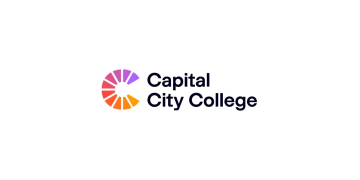Changes to governance and organisation structures are starting to make it more challenging for schools to work collaboratively, says Anna Hennell James.
In Ipswich, where I work, we have a cluster of local schools made up of two high schools and seven feeder primaries. Schools in the area have historically worked around school-based “pyramids”, which provided a natural structure. Now each of the high schools is with a different national sponsor. Six of the primaries are also academies, leaving one as a maintained school. The six primary academies represent four different academy arrangements – two national chains and two locally formed MATs.
Recruiting good staff has always been a challenge. However, competition for teachers has now become intense in an environment where staffing is already difficult. The use of consultants with targets for recruitment is becoming common. Teachers have been individually targeted, offered rapid promotion, improved salaries and the opportunity to write their own job description.
There is a growing culture of protectionism too. Because staffing is difficult, sometimes it seems that trainees are not placed fairly across the region or are discouraged from applying to other schools.
Because staffing is difficult, sometimes it seems that trainees are not placed fairly across the region
This perpetuates the cycle: schools that are already performing have access to better trainees and can sustain good staffing. Meanwhile schools in challenging circumstances that need the very best teachers face continuing struggles to recruit. We are in a system that is creating competition between schools, rather than ensuring schools collaborate so they have what they need to succeed.
In addition to recruitment challenges, we also see admissions criteria stoking competition. Parents are known to move to a certain catchment area, or even temporarily rent a house there, to have the right address to put on their application form. These schools become oversubscribed and are not in a position to take pupils seeking a place due to permanent exclusion, a managed move request, or a recent move to the area.
Those schools which are not full end up taking all of these pupils, and their intake gradually shifts and changes. They have higher levels of pupils with additional needs, which makes it increasingly hard to find the resources to meet these needs.
This leads to poorer outcomes, which hurts their reputation, leading to fewer first-choice preferences from parents. Historically, 95 per cent of the pupils from my school would go to the local high school. This year that figure is down to 65 per cent.
Many of the parents who can afford money for bus fares to take them out of Ipswich are those whose children are already doing well academically. So the local high school ends up with an unbalanced intake. Yet schools are all held to the same accountability measures with the same resources and funding. The situation does not foster an atmosphere of collaboration.
We are finding ways to ensure our local schools are populated by their immediate communities. As a group of school leaders, we have come up with a number of ideas that could be implemented anywhere in the country.
We work on whole-school projects together, hold events at each other’s schools, and portray a united front (e.g. at local meetings). A recent “Raising aspirations” event was a great success; we secured funding to produce a video and website telling the stories of people educated round here and who went on to be doctors, school leaders, journalists, PhD pupils, sports coaches, musicians and more.
We have printed copies of the booklets for local children’s centres, school libraries, public libraries and other community spaces. We even had adverts on the backs of buses that serve the local area. We hope we are getting across the message that local schools have as much to offer as the more high-profile schools outside the area.
But a marketing campaign is not enough on its own. Every school needs to have the capacity to meet the needs of the local community. We need to ensure schools are not having to fight for staff, by improving the recruitment and retention of teachers and leaders.
We need an admissions process that does not pit schools against each other or favour children from families who can pay for bus fares or a rented address.
We need a firm commitment from all schools that we all have to work together to change things – it cannot be left solely to the schools who have disadvantaged pupils within their community to ensure our region has good social mobility. In times of complexity and challenge, it is only by working collaboratively that we can bring about that change.
Anna Hennell James is headteacher of Halifax Primary School in Ipswich, Suffolk
This piece was adapted from Challenging Disadvantage Together, a collection of essays from leaders of Teach First schools







Anna is correct about what is happening.
But with the current politicians leading, it is only going to get worse.
The system IS working as intended.
Mr Gove’s big idea was to generate improvement by competition. Improvement by Natural Selection. The strong would survive and the weak go to the wall, along with the fate of thousands of young people. What we see happening is intentional policy by government.
Sir David Carter makes speeches imploring Academy Chains to support the weak. This is ridiculous. It’s as useful as asking a lion not to eat an antelope. I am sure he knows this.
The Labour Party seems to have embraced Academisation, so there is no escape route there.
The headteacher unions remind one of Nero fiddling whilst Rome burnt. Why are they so afraid to speak out? Perhaps it’s because the system is now so broken, no-one has a clue how to fix it.
Putting across a different view point just for the sake of a semblance of diversity, I believe that the original intention was indeed to generate improvement by competition and that the strong would survive and the weak go to the wall. However this is referring to the educational providers, not the children. The fundamental point being that if you are not good enough, whether you are local authority or academy, the system is no longer going to permit you to carry on regardless. The intention with regards to the fate of young people was that it would be improved. Whether or not you agree with the solution proposed, to actually say that any politician does anything intentionally to harm the prospects of children is plainly ridiculous. I disagree with many politicians (probably all of them from time to time), and I think a lot of their proposals are unhinged, but I don’t think any of them are intending to do harm.
“We need to ensure schools are not having to fight for staff, by improving the recruitment and retention of teachers and leaders.”
But these are Teach First schools. Do these leaders not understand what Teach FIRST aims to do? It isn’t aimed at retaining staff, that’s for sure.
You really couldn’t make it up.